
To turn a phrase, tourist money corrupts; overwhelming tourist interest corrupts overwhelmingly.
In some environments, like the rain forests of Borneo, that turns a safari into a show. In the wild, orangutans are very difficult to find. We only saw one aloft in a tree nest during our trip. So, to ensure that visitors see these magnificent apes, park personnel arrange banquets at feeding times scheduled during the day. They lay out purchased fruit and buckets of cream on a platform. The orangutans eagerly gather for an easy take-out option. (Click here to read the article.)
Tourists turn everyone into a salesperson, whether that means ensuring all visitors get to see what they came for, or the mood-destroying gauntlets of souvenir shops at even the holiest of sites. And they strain the infrastructures around a tourist destination even in wealthy places, or bit by bit deteriorate the experience. Worse yet, in response to the tourist onslaught, providers rise to a level of greed or incompetence – what one might call the Peterhof Principle.

Some places like Bhutan or the wild animal preserves in Africa limit numbers by pricing access steeply. However, most places want as many visitors as possible. At any time, St. Petersburg is a special place to visit, with the quirkiness of Venice (which itself has seen plenty of harm from the floods of tourists) and the harmonious beauty of Haussmann’s Paris (whose quaint districts like St. Germain on the once bohemian Left Bank now look more like a user-friendly fantasy version of themselves).
In the high season, however, St. Petersburg too often subverts its pleasures by catering to the onslaught of tourists from other parts of Russia and other countries. They pour in here via long-distance busses and trains, as well as cruise boats. We counted a half-dozen vessels at the mouth of the Neva River during our boat trip to Peterhof.
At world renowned attractions, like the major palaces and churches, throngs spill out of tour busses to shuffle along with plentiful independents. Famous streets like Nevsky Prospect are nearly unwalkable. Individuals clog the ticket lines and cafes as well.
With some effort, and some easing away from the most popular sites, you just might carve out a decent experience but it’s so difficult to figure out how.

Our visit to the Peterhof Palace and to the Hermitage Museum/Winter Palace demonstrated how tourists undermine their own experience.
Peterhof is about 30 kilometers west of the city, accessible in a variety of ways, most enjoyably by hydrofoil. The extensive Lower Park grounds, a mix of formal and natural areas, are the principal attraction because of the dozens of fountains and cascades within the park. At 700 rubles (about $11 USD), entrance tickets cost more than the palace itself. Queues for entrance can be long, but not always during the day.
Despite the cost, the steady flow of tour groups and guides with people in tow can turn a visit into an ordeal, particularly with some strange policies and the lack of information about them.
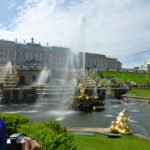
Inside, the park is so big that you can find some breathing room and easy-going pleasure without too much crowding. The throngs cluster mainly at the fountains, the primary reasons for coming, especially the central Grand Cascade. Everyone wants a place at the edge for the ideal selfie. Or to snap a posed picture of a friend with the backdrop of water gushing behind them or with the dazzling gold paint of statuary and trim shining brightly. Many just claim space for a while to ogle it all. At these spots, you can be thinking you just want to get away in one piece, rather than actually enjoying the experience.

Meanwhile, money talks here. If you’re interested in any of the half-dozen or so auxiliary buildings in the Lower Park, you’ll get dinged for every one of them. The golden-domed Peter chapel alone demands a stunning 500 rubles (about $8 USD) to get in. And you must purchase the ticket for each building right there, with no option for a combination ticket. The perverse policy explains the oddity that these places had very, very few visitors despite the overall crowds.
Another perverse policy – or is it greed – keeps people from escaping and then returning. Anyone who leaves the Lower Park is not allowed to return without paying yet another 700 ruble park admission. For someone who comes by boat, the only option is to enter the Lower Park first. They’re cut off from other nearby palaces and such, as well as the “free” Upper Park, though a staff member consoled us by saying it was not that special.
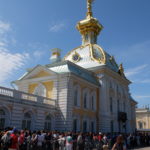
The most trying experience is the palace itself, which has clearly gone mad for the money that the tour busses bring in. Individuals without guides are disfavored. In the busy season, at other attractions in town, an individual can buy tickets online, or from automated machines at the site. Peterhof offers neither.
Most importantly, entry times for individuals are limited. At Peterhof, the stated policy is that individuals can only enter the palace from 12 to 2, and then at the very end of the day. This timing is consistent with typical tour behavior: mid-day is lunch time and day’s end requires getting back to the hotel for a snooze before dinner. But the Peterhof is so busy that tours seem to continue at all times.
All these policies obstruct an individual tourist who is not in a group or with an official guide. At noon, for example, the only place to buy palace tickets had a queue that was, by our estimate, two hours long. One Russian we met later had waited an hour and a half to buy an entry ticket only to be turned away at 2:02.
Frustrated and disbelieving that we actually needed to wait in such a line, we kept asking for alternatives from the only sources of information – stray staff, mainly guards or bored cashiers selling tickets for other buildings, all of whom spoke little English. After deciphering what they told us, we concluded that foreigners could enter from a short queue near the front door at 2:30. Why? We had no idea.
Once inside the palace, you suffer a different ordeal, like walking through a crowded metro station at its busiest time for an hour. Tour group after tour group inches continually through the rooms and passages, herded past you or through you if you care to dawdle with the audioguide or read the panels in each room. Nor can you take any pictures, for allowing this would make movement impossible. As it is, despite the splendor of the re-created rooms, the experience had to be as unpleasant for those in the groups as it was for us. We didn’t have time to ask them.
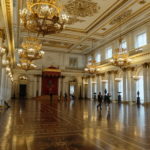
By contrast, the Hermitage at the heart of St. Petersburg offers plentiful information (despite a somewhat out of date phone app), multi-day tickets, unrestricted entry times, online ticketing and vast spaces for the throngs. Yet the same policies, with no flow control (such as the Uffizi has imposed), make for a mob scene during much of the day, hardly conducive to contemplation of fine art. Tour groups swarm the halls at all times, partly to view the glorious rooms of the Winter Palace inside the complex and partly to see some of the art.

In the spacious Rembrandt room, for example, with dozens of splendid canvasses on the walls, we found it tough to approach the artworks, let alone maneuver around the blockades formed when a tour guide halted her minions for a two-minute presentation. In the da Vinci room, scrums kept forming around his two luminescent paintings so we couldn’t get near them for a long time. A large man from a tour group bulled his way through several elderly visitors so he could capture a photo of one.
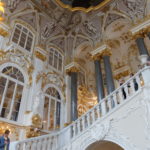
The Grand Staircase buzzed with the hum and click from all those gathered in corners to catch a sparkling image of the space. Crowds packed the attractive Peacock Room, whose eponymous golden bird – a massive moving clock when running – occupies the center. Fortunately, other palace rooms were so large that the crowds proved a bit less bothersome, especially near closing time.
What’s a hapless visitor to do?
Clearly the best option is to go when the peak season is done. If one can’t do this, even a guide cannot save you from the throngs, though she might keep you from searching for errant artworks.
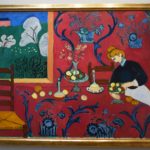
We tried to take the roads less travelled by. At the Hermitage, we could cross the expansive Palace square past the Alexander I column to the General Staff building. That’s one of the five Hermitage buildings covered by its pricey, but worthwhile, combined ticket. Newly opened and without the seductive charms of the Palace rooms, this building sees many fewer tour groups – though the busy-ness could change over time. For us, that meant very few bottlenecks or thronged paintings, especially in the spacious rooms where the most popular works hang. The several Matisse rooms were a delight for ‘slow viewing’ as were the many Impressionist rooms.
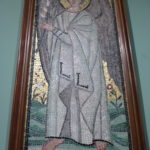
Coming late one day seemed to deliver a less hectic experience, but not the second day. Otherwise, head away from the state rooms of the Winter Palace and far from the well-known artists in the main building. There were not a lot of people eyeing the Byzantine collection or East Asian art. We actually enjoyed ourselves.
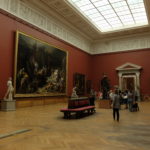
Or head to less popular treats. At the Russian Museum in Mikhailovsky Palace, rooms were quite grand, some as spectacular as at the Hermitage, and the range of Russian art impressive. The only tour group was a Russian one and we could savor the intriguing art in relative peace.
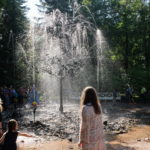
At Peterhof, sure, ogle the brilliant fountains for a bit, but enjoy yourself by wandering far afield in the grounds. Several families peacefully frolicked on the bit of shoreline between the pier and the busy Bath House. Kids of all ages were dancing in and out of variable sprays and misting trees far from the palace.
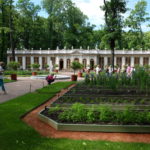
Or visit other palaces in the vicinity. Back in town, the Summer Garden along the embankment away from the Hermitage was peaceful, enjoyed mainly by local residents without the crowds. It offered a delightful array of hidden nooks whose contents surprised, as well as its own interactive fountains.

Also, around town, go where the locals go. We had a wonderful time sitting outdoors with residents in the huge square enveloping the Spasskaya Metro stop, close to our apartment. Even near Nevsky Prospect, we merely had to go a few meters down a quiet street to the vegetarian restaurant Ukrop, with few tables and some of the best prepared food in the city.
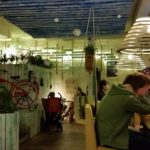
A few metro stops from there, we strolled peacefully through the Alexander Nevsky Monastery founded by Peter the Great himself, as well as the Tikhvin Cemetery, the city’s Pere Lachaise, with elaborate gravesites for famous leaders and artists like Tchaikovsky and Dostoevsky. In the church, the devout droned in prayer at the silver coffin of the 13th century Tsar.
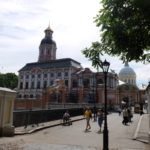
While boat followed boat along the canals, to the banter of cruise guides, we strolled peacefully alongside other canals, savoring the same harmonious building architecture while slowly admiring quirky features and fanciful bridges.
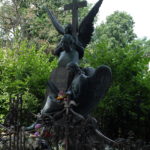
Yes, we might have missed a few tourist experiences, like big-domed St. Isaac’s Cathedral, which was nearly invisible behind the innumerable tour busses parked there. Yet we saw plenty of other fine and less visited churches.

We think our personal experience was so much richer for the crowd-avoiding choices we made.
(Also, for more pictures from Russia, CLICK HERE to view the slideshow at the end of the Russia itinerary page.)


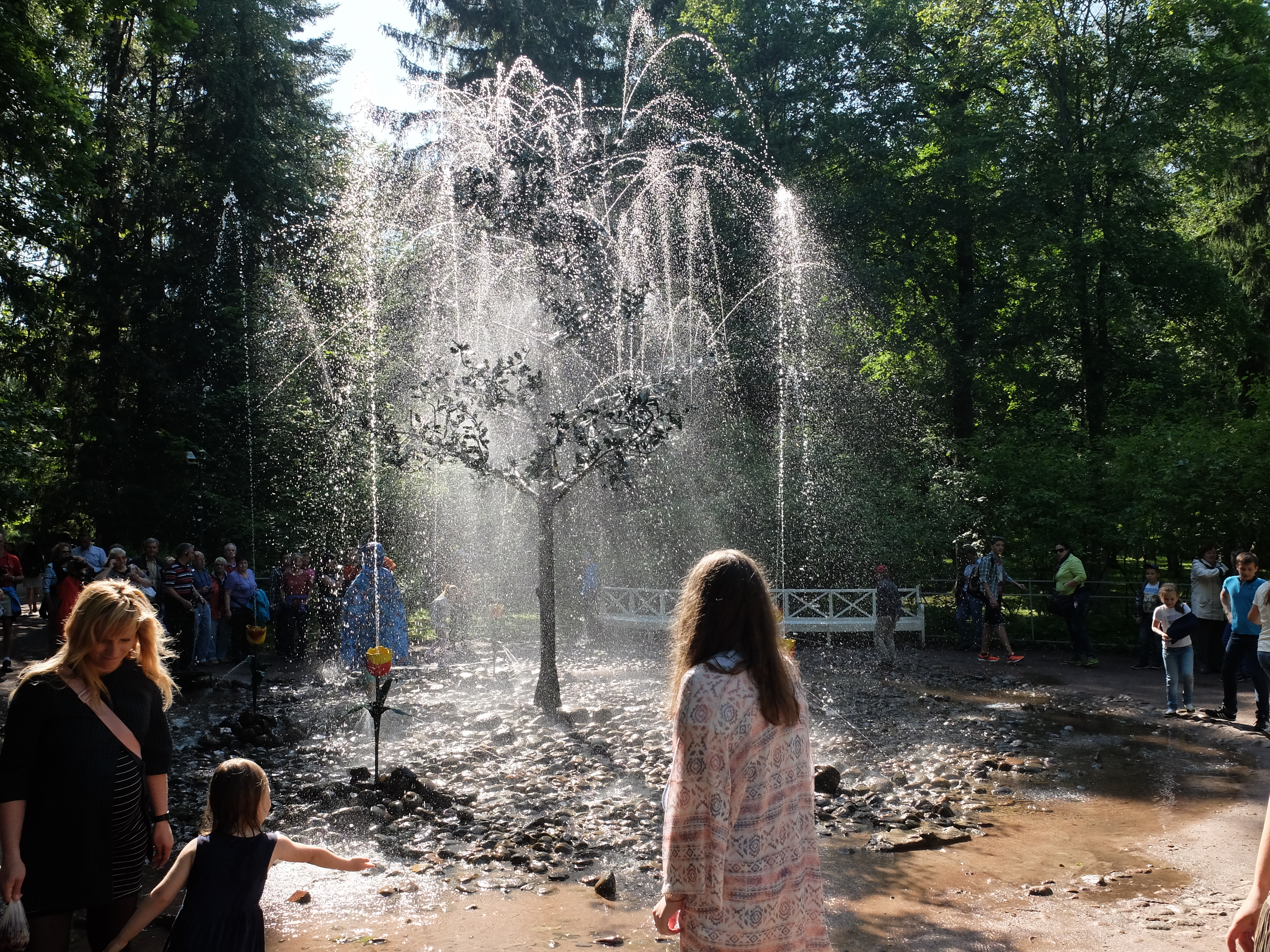

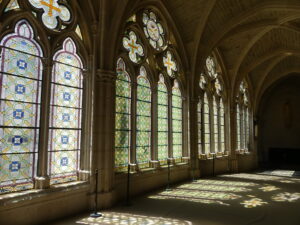
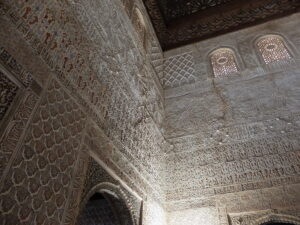
Nancy, you must publish your fine work. Your writing is superb, as are the photographs. Your account of these travels is so revealing of the superficial lives so many live. The tourist industry, as you say, alters the nature of the place being visited. How many more cruise shuttles could possibly enter the canal of the last photograph on this blog. I wonder what the locals are thinking.
I am reminded of so often being perplexed by tourists being more interested in taking photographs of themselves at a site than actually viewing the site outside the camera lense, and experiencing the place with all one’s senses.
So often I bet people couldn’t hear their own tour guide’s explanation for being drowned out by the other tour guide a few feet away.
It might even be hunorouis if it weren’t so somber. Reflecting on the human condition of the times…
A remarkable account of this adventure, Nancy. Thank you for sharing.
P.S. There used to be a Ukrops in Richmond — a grocery but with so many yummy prepared foods. I wonder at its relationship to the Ukrops you mentioned.,,,
Thank you so much for your kind words; we’re working on the publishing idea! And we appreciate your insights about human behavior, and its idiosyncrasies. While touring SE Asia, one of our favorite guides gave his own insights about cultural differences in photos at a site. He had noticed that Westerners want to capture the look of a place and don’t need themselves in the photo, but Asians want themselves in the photo in order to prove to friends that they were there. The distinction, as we could see at Peterhof, is really not so true now, what with abundant selfies and imitation of others. At the Taj Mahal – which was packed with people when we visited – two photos are all but mandatory for any visitor, one of the place itself and one of you in front of it.
We looked up Ukrops, which was named for its founder in 1937. The word Ukrop in Russian means ‘dill.’ So it’s possible his family were dill picklers in the past!